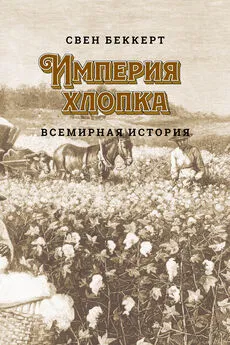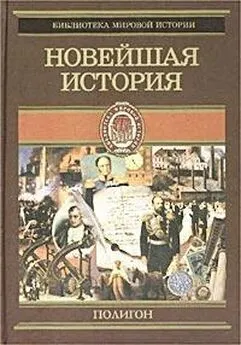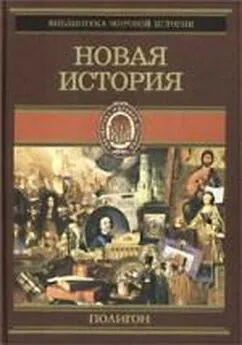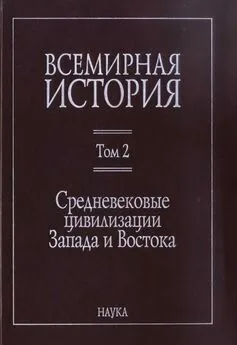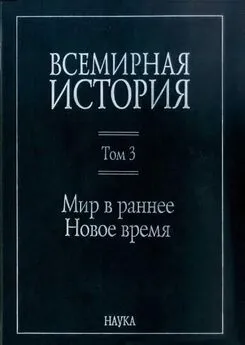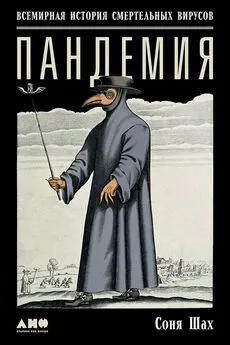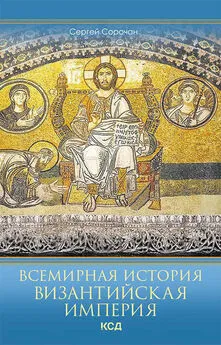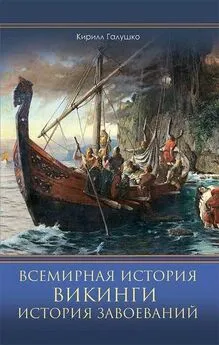Свен Беккерт - Империя хлопка. Всемирная история
- Название:Империя хлопка. Всемирная история
- Автор:
- Жанр:
- Издательство:неизвестно
- Год:неизвестен
- ISBN:978-5-93255-528-6
- Рейтинг:
- Избранное:Добавить в избранное
-
Отзывы:
-
Ваша оценка:
Свен Беккерт - Империя хлопка. Всемирная история краткое содержание
Империя хлопка. Всемирная история - читать онлайн бесплатно ознакомительный отрывок
Интервал:
Закладка:
19
K. D. Hake and T. A. Kerby, “Cotton and the Environment,” Cotton Production Manual (UCANR Publications, 1996), 324–27; Frederick Wilkinson, The Story of the Cotton Plant (New York: D. Appleton & Company, 1899), 39.
20
Имеется (небольшое) несогласие между Gavin Wright, The Political Economy ofthe Cotton South: Households, Markets, and Wealth in the Nineteenth Century (New York: Norton, 1978), 14–5, и Jason Clay, World Agriculture and the Environment: A Commodity-by-Commodity Guide to Impacts and Practices (Washington, DC: Island Press, 2004), 284–87.
21
Ralf Kittler, Manfred Kaysar, and Mark Stoneking, “Molecular Evolution of Pedicu-lus humanus and the Origin of Clothing,” Current Biology 13 (August 19, 2003): 1414–15; о намного более ранних временах прядения и ткачества см.: Eli-so Kvabadze et al., “30,000 Year-Old Wild Flax Fibres,” Science 11 (September 2009): 1359.
22
Almut Bohnsack, Spinnen und Weben: Entwicklung von Technik und Arbeit im Textil-gewerbe (Reinbek: Rowohlt, 1981), 32, 31; см.: Kleidung , in Johannes Hoops, Reallexikon der Germanischen Altertumskunde , vol. 16 (Berlin: Walter de Gruyter, 2000), 603–25; Mary Schoeser, World Textiles: A Concise History (New York: Thames & Hudson World of Art, 2003), 20; Kleidung , in Max Ebert, ed., Reallexikon der Vorgeschichte , vol. 6 (Berlin: Walter de Gruyter, 1926), 380–94; Harry Bates Brown, Cotton: History, Species, Varieties, Morphology, Breeding, Culture, Diseases, Marketing, and Uses (New York: McGraw-Hill, 1938), 1.
23
См., например: T. W. Rhys Davids, trans., Vinaya Texts (Oxford: Clarendon Press, 1885), 168; Georg Buehler, trans., The Sacred Laws of the Aryas (Oxford: Clarendon Press, 1882), 165, 169, 170; Vijaya Ramaswamy, Textiles and Weavers in South India (New York: Oxford University Press, 2006), 1, 57; Doran Ross, ed., Wrapped in Pride: Ghanaian Kente and African American Identity (Los Angeles: UCLA Fowler Museum of Cultural History, 1998), 77; Frank Goldtooth, как записано Stanley A. Fishler, In the Beginning: A Navaho Creation Myth (Salt Lake City: University of Utah Press, 1953), 16; Aileen O’Bryan, The Dine: Origin Myths of the Navaho Indians , Smithsonian Institution, Bureau of American Ethnology, Bulletin 163 (Washington, DC: Government Printing Office, 1956), 38; Francesca Bray, “Textile Production and Gender Roles in China, 1000–1700,” Chinese Science 12 (1995): 116; Anthony Winterbourne, When the Norns Have Spoken: Fate in Germanic Paganism (Madison, NJ: Fairleigh Dickinson University Press, 2004), 96.
24
C. L. Brubaker et al., “The Origin and Domestication of Cotton,” in C. Wayne Smith and J. Tom Cothren, eds., Cotton: Origin, History, Technology, and Production (New York: John Wiley & Sons, 1999), 4, 5–6, 12, 17, 22; Wafaa M. Amer and Osama A. Momtaz, “Historic Background of Egyptian Cotton (2600 BC— AD 1910),” Archives ofNatural History 26 (1999): 219.
25
Thomas Robson Hay and Hal R. Taylor, “Cotton,” in William Darrach Halsey and Emanuel Friedman, eds., Collier’s Encyclopedia, with Bibliography and Index (New York: Macmillan Educational Co., 1981), 387; A. Lucas, Ancient Egyptian Materials and Industries , 4th ed., revised by J. R. Harris (London: Edward Arnold, 1962), 147; Richard H. Meadow, “The Origins and Spread of Agriculture and Pastoralism in Northwestern South Asia,” in David R. Harris, ed., The Origins and Spread of Agriculture and Pastoralism in Eurasia (London: UCL Press, 1996), 396; традиционное индийское описание этих классических занятий см.: S. V. Puntambekar and N. S. Varadachari, Hand-Spinning and Hand-Weaving: An Essay (Ahmedabad: All India Spinners’ Association, 1926), 1–9; James Mann, The Cotton Trade of Great Britain (London: Simpkin, Marshall & Cº, 1860), 1, 2–3; Brown, Cotton , 2; см. также: Herodotus, The Histories , ed. A. R. Burn, trans. Aubrey de Selincourt, rev. ed., Penguin Classics (Harmondsworth, UK: Penguin, 1972), 245; см. также: Arno S. Pearse, The Cotton Industry ofIndia, Being the Report of the Journey to India (Manchester: Taylor, Garnett, Evans, 1930), 15; J. Forbes Royle, On the Culture and Commerce of Cotton in India and Elsewhere: With an Account of the Experiments Made by the Hon. East India Company up to the Present Time (London: Smith, Elder & Cº, 1851), 116ff.
26
Brown, Cotton , 5; Edward Baines, History of the Cotton Manufacture in Great Britain (London: H. Fisher, R. Fisher, and P. Jackson, 1835), 65–70; см.: Prasannan Parthasarathi, “Cotton Textiles in the Indian Subcontinent, 1200–1800,” in Giorgio Riello and Prasannan Parthasarathi, eds., The Spinning World: A Global History of Cotton Textiles, 1200–1850 (New York: Oxford University Press, 2009), 23–25.
27
H. Wescher, “Die Baumwolle im Altertum,” in Ciba-Rundschau 45 (June 1940): 1635; Alwin Oppel, Die Baumwolle (Leipzig: Duncker & Humblot, 1902), 206–7; цит. по: Clinton G. Gilroy, The History of Silk, Cotton, Linen, Wool, and Other Fibrous Substances (New York: Harper & Brothers, 1845), 334; см.: Marco Polo, Travels of Marco Polo (Westminster, MD: Modern Library, 2001), 174; Baines, History of the Cotton Manufacture , 56, 58.
28
A. G. Hopkins, An Economic History of West Africa (New York: Columbia University Press, 1973), 48; M. D. C. Crawford, The Heritage of Cotton: The Fibre of Two Worlds and Many Ages (New York: G. P. Putnam’s Sons, 1924), 46; Amer and Momtaz, “Historic Background,” 212; Oppel, Die Baumwolle , 209; William H. Prescott, History of the Conquest of Peru (Westminster, MD: Modern Library, 2000), 51, 108, 300.
29
Gilroy, History of Silk , 331–32; Smith and Hirth, “Development of Prehispanic Cotton-Spinning,” 353; Barbara L. Stark, Lynette Heller, and Michael A. Ohnersorgen, “People with Cloth: Mesoamerican Economic Change from the Perspective of Cotton in South-Central Veracruz,” Latin American Antiquity 9 (March 1978): 9, 25, 27; Crawford, Heritage , 32, 35; Smith and Hirth, “Development of Prehispanic Cotton-Spinning,” 355; Barbara Ann Hall, “Spindle Whorls and Cotton Production at Middle Classic Matacapan and in the Gulf Lowlands,” in Barbara L. Stark and Philip J. Arnold III, eds., Olmec to Aztec: Settlement Patterns in the Ancient Gufl Lowlands (Tucson: University of Arizona Press, 1997), 117, 133, 134.
30
Juan de Villagutierre Soto-Mayor, History of the Conquest of the Province of the Itza , 1st English edition, translated from the 2nd Spanish edition by Robert D. Wood (Culver City, CA: Labyrinthos, 1983), 197; Berdan, “Cotton in Aztec Mexico,” 235–36, 239; Smith and Hirth, “Development of Prehispanic Cotton-Spinning,” 356; R. B. Handy, “History and General Statistics of Cotton,” in The Cotton Plant: Its History, Botany, Chemistry, Culture, Enemies, and Uses , prepared under the supervision of A. C. True, United States Department of Agriculture, Office of Experiment Stations, Bulletin 33 (Washington, DC: Government Printing Office, 1896), 63; United States, Historical Statistics of the United States, Colonial Times to 1970 , vol. 1 (Washington, DC: U.S. Dept. of Commerce, Bureau of the Census, 1975), Series K-550–563, “Hay, Cotton, Cottonseed, Shorn Wool, and Tobacco – Acreage, Production, and Price: 1790 to 1970,” 518; Hall, “Spindle Whorls,” 118; Berdan, “Cotton in Aztec Mexico,” 238; Stark, Heller, and Ohnersorgen, “People with Cloth,” 14, 29.
31
Brown, Cotton , 14; Kate Peck Kent, Prehistoric Textiles of the Southwest (Santa Fe, NM: School of American Research Press, 1983), 9, 27, 28, 29; цит. по: Ward Alan Minge, “Effectos del Pais: A History of Weaving Along the Rio Grande,” in Nora Fisher, ed., Rio Grande Textiles (Santa Fe: Museum of New Mexico Press, 1994), 6; Kate Peck Kent, Pueblo Indian Textiles: A Living Tradition (Santa Fe, NM: School of American Research Press, 1983), 26; Crawford, Heritage , 37; David Watts, The West Indies: Patterns of Development, Culture and Environmental Change Since 1492 (Cambridge: Cambridge University Press, 1990), 65, 89, 174; Mann, Cotton Trade , 4; Christopher Columbus, November 4, 1492, The Diario of Christopher Columbus’sfirst voyage to America: 1492–1493 , abstracted by Fray Bartolome de las Casas, transcribed and translated into English, with notes and a concordance of the Spanish, by Oliver Dunn and James E. Kelley Jr. (Norman: University of Oklahoma Press, 1989), 131–35; см.: записи за 16 октября, 3 ноября и 5 ноября 1492 г., 85–91, 131, 135.
32
Pliny the Elder, The Natural History ofPliny , vol. 4, trans. John Bostock and H. T. Riley (London: Henry G. Bohn, 1856), 134–35; Mann, Cotton Trade , 3. Christopher Ehret, The Civilizations of Africa: A History to 1800 (Charlottesville: University Press of Virginia, 2002), 67–68; Ross, Wrapped in Pride , 75; Lars Sundstrom, The Trade of Guinea (Lund: Hakan Ohlssons Boktryckeri, 1965), 148; F. L. Griffith and G. M. Crowfoot, “On the Early Use of Cotton in the Nile Valley,” Journal of Egyptian Archeology 20 (1934): 7; Amer and Momtaz, “Historic Background,” 212, 214, 215, 217.
33
M. Kouame Aka, “Production et circulation des cotonnades en Afrique de l’Ouest du XIeme siecle a la fin de la conquette coloniale (1921)” (PhD dissertation, Universite de Cocody-Abidjan, 2013), 18, 41; Marion Johnson, “Technology, Competition, and African Crafts,” in Clive Dewey and A. G. Hopkins, eds., The Imperial Impact: Studies in the Economic History ofAfrica and India (London: Athlone Press, 1978), 176, 195, 201; Venice Lamb and Judy Holmes, Nigerian Weaving (Roxford: H. A. & V. M. Lamb, 1980), 15, 16; Marion Johnson, “Cloth Strips and History,” West African Journal of Archaeology 7 (1977): 169; Philip D. Curtin, Economic Change in Precolonial Africa: Senegambia in the Era of the Slave Trade (Madison: University of Wisconsin Press, 1975), 48; Marion Johnson, “Cloth as Money: The Cloth Strip Currencies of Africa,” in Dale Idiens and K. G. Pointing, Textiles ofAfrica (Bath: Pasold Research Fund, 1980), 201. В юго-восточной Африке также имелось производство хлопкового текстиля. Patricia Davison and Patrick Harries, “Cotton Weaving in South-east Africa: Its History and Technology,” in Idiens and Pointing, Textiles ofAfrica , 177, 179, 180; Marie Philiponeau, Le coton et l’Islam: Fil d’une histoire africaine (Algiers: Casbah Editions, 2009), 15, 17; Ross, Wrapped in Pride , 75; Rita Bolland, Tellem Textiles: Archaeological Findsfrom Burial Caves in Mali’s Bandiagara Cliff (Leiden: Rijksmuseum voor Volkenkunde, 1991); Leo Africanus, The History and Description of Africa and of the Notable Things Therein Contained, Done in the English in the Year 1600 by John Pory , vol. 3 (London: Hakluyt Society, 1896), 823, 824.
Читать дальшеИнтервал:
Закладка:
